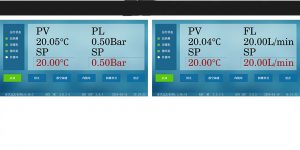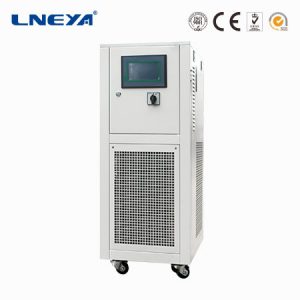¿Qué ocurre si la velocidad de enfriamiento del sistema de control de la temperatura de refrigeración y calentamiento del reactor disminuye?
LNEYA cooling and heating temperature control system is a laboratory instrument and equipment for temperature control of supporting reactors in pharmaceutical and chemical laboratories and other industries. It adopts a fully closed circulation pipeline system to maintain the stability of temperature control of reactors in reactors.

The temperature range of the cooling and heating temperature control system of the reaction kettle is from – 120 ℃ to 350 ℃. Generally, the temperature selection and temperature setting will be carried out according to the needs of users. Within the specified time range, the cooling and heating temperature control system of the reaction kettle will reach the set temperature. However, if the cooling and heating temperature control system of the reaction kettle operates for a long time or operates improperly, the cooling of the cooling and heating temperature control system of the reaction kettle will slow down.
When the temperature drop of the reactor cooling and heating temperature control system is slow, it is necessary to touch the exhaust and suction pipes of the compressor of the main unit by hand. Once it is found that the temperature of the exhaust pipe of the new reactor cooling and heating temperature control system is not high, and the temperature of the suction pipe is not low but not frosted, it may be that the reactor cooling and heating temperature control system lacks refrigerant, Just add the refrigerant according to the steps of adding the refrigerant.
If the cooling rate of the reactor cooling heating temperature control system is slow, if it is not an electrical fault, it may be a problem of the refrigeration system. It is necessary to check the low temperature, exhaust and suction pressure of the refrigeration compressor in the refrigeration system of the new reactor cooling heating temperature control system. This may be due to insufficient refrigerant of the reactor cooling heating temperature control system.
LNEYA reminded that after finding out the slow fault of the cooling and heating temperature control system of the reaction kettle, it is necessary to solve the specific fault to better operate the new cooling and heating temperature control system of the reaction kettle.
Recomendaciones relacionadas
-
¿Cuáles son las características de refrigeración de las enfriadoras industriales?
1166If there is a high temperature difference between the inlet and outlet water, then a large external tank will be used to store cold water. In this case, the cooling water will not be directly from the cooler application. Deep into the outside of t...
Ver detalles -
How does the cooling and heating circulator equipment control the temperature of the jacket glass re
888The cooling and heating circulator equipment is often equipped with a reaction kettle for temperature control, so how to connect and control the temperature? 1. Circular jacket inlet and outlet interface We mainly use flange interfaces for the in...
Ver detalles -
Temperature control during new energy vehicle battery test
1130With the continuous implementation of energy saving and emission reduction policies, new energy power batteries are also continuously encouraged to develop, and liquid cooling systems have become an inevitable trend for new energy vehicles. The or...
Ver detalles -
Clasificación y ventajas e inconvenientes de los refrigeradores de uso común
1084¿Cuál es la clasificación y cuáles son las ventajas y desventajas de las enfriadoras? Echemos un vistazo juntos hoy. 1. Distintos métodos de clasificación de las enfriadoras1. Según el método de refrigeración del condensador: enfriadoras de agua y enfriadoras de agua...
Ver detalles
 LNEYA Enfriadoras industriales Fabricante Proveedor
LNEYA Enfriadoras industriales Fabricante Proveedor













